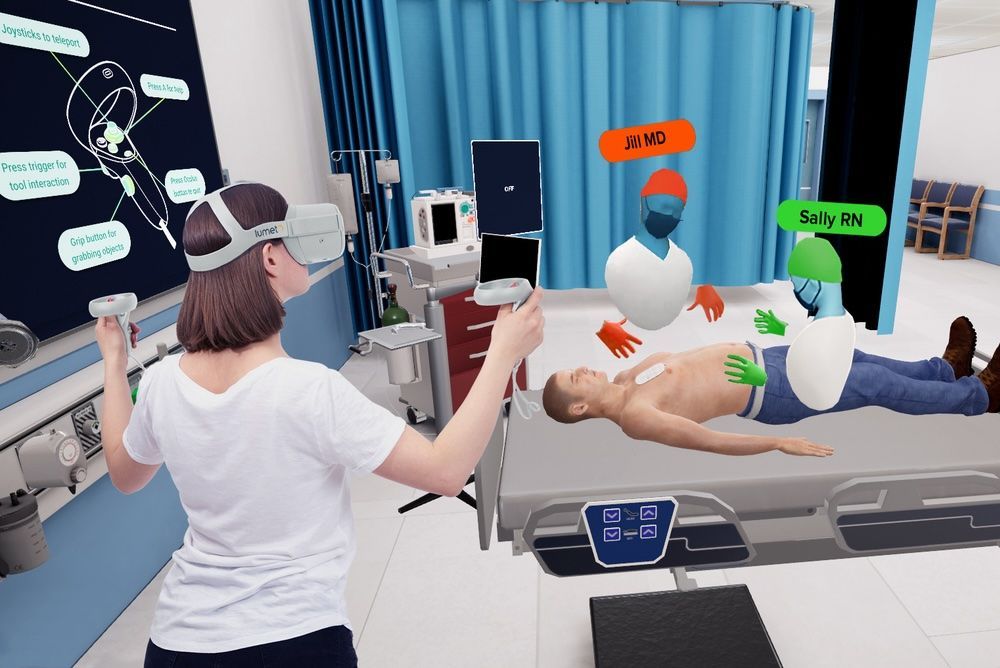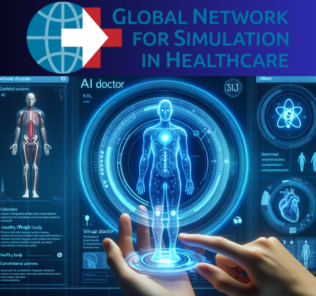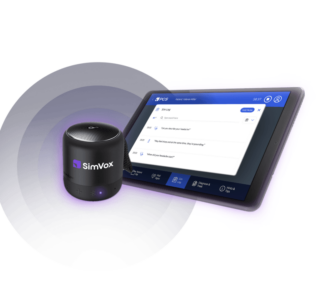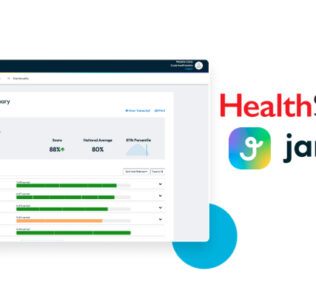Lumeto Expands InvolveXR VR with Customizable AI Conversation
Healthcare simulation is riding an innovative wave of technology with a new medium and dimension of training, especially through Extended Reality (XR). The team at Lumeto lives and breathes this technology and has brought a fully immersive and highly customizable VR Simulation Lab, InvolveXR. In the spectrum of XR, VR-based training has been gaining consistent popularity, which leaves clinical educators to envision what this new medium can truly offer for healthcare training. In this Healthysimulation.com article, a review of the various aspects of this VR-based training platform and its approach to be a practical tool to deliver effective training will be discussed.
Adaptable Simulations to Meet Learners’ Competency Levels with Flexible Training Modes
Recognizing that everyone learns differently, every educator has different training approaches, and every program has different training objectives, the InvolveXR platform is built to support a variety of training modes – synchronous, dynamic instructor-led training, asynchronous self-paced learning, single and multi-learner simulations and onsite, remote and hybrid accessibility to training.
Sponsored Content:
Furthermore, subscribing to the philosophy that learning and competency development are non-linear, the InvolveXR platform enables several Learning Loops. A Learning Loop can start with an instructor-led simulation for a group of learners, with the instructor able to adapt the training for each learner’s competency level and have teachable moments along the training. This can be followed with each learner going through self-paced learning on specific interlinked topics to gain further understanding. Finally, an instructor-led simulation can be delivered to reinforce the concepts and assess the competency development. In another instance, the Learning Loop can start with individual learners going through self-paced training on specific topics and then come together as a group to train on a patient encounter, where they apply their learnings. Each of these learning experiences is tied to customizable tools for summative and formative assessments.
The video above illustrates a sequence from a simulation of a patient encounter. The instructor/educator is able to dynamically change the vitals during the simulation, adapting it to signal the learners that a medication error has occurred. This gives the learners a learning moment to understand the importance of clear communication and callbacks while administering medication, see the impact of the wrong medication on the patient, and think critically about remedial measures.
InvolveXR Linked to Professional Competencies
Lumeto’s immersive simulation lab, InvolveXR, aims to meaningfully reduce the huge social and financial cost of medical error. Flexible training in virtual simulated environments can improve the preparedness and confidence of clinicians globally. Lumeto operates across the healthcare spectrum, catering to educators and learners at every level of their competency, enhancing learning outcomes tied to individual and team decision-making, problem-solving, de-escalation, and complex or rare procedures.
Sponsored Content:
As more healthcare professional education programs transition to competency-based education, the ability to educate, track performance, and measure competencies becomes essential. Involve XR with the Conversational System can be linked to multiple competencies. Lumeto can incorporate the initial competencies at the beginning of using the product, and these competencies can be integrated across the curriculum. Programs and educators can update and add competencies as needed.
For example, to help pre-licensure Nursing learners build competencies for the Next Gen NCLEX, the InvolveXR enables learners to build preparedness by the cascading of learning and developing critical thinking. Competency-mapped checklists can be used for assessments similar to the exam, improving the learners’ confidence and preparedness. A similar approach can be taken for interprofessional education using frameworks such as TeamSTEPPS. The NCSBN Clinical Judgement Measurement Model is a great guide to build clinical judgment.
InvolveXR for Versatility, Adaptability, and Customization
The main advantage of Lumeto is the highly customizable platform that allows for adaptability and flexibility now with AI-driven patient communication. There are over 50 Learning Experiences in the Lumeto Library on the platform, each of which can be used and adapted to meet the individual learner, educator, and program needs. At least 20 new Learning Experiences are added every quarter. Each of these Learning Experiences is created by clinicians without any coding. No aspect of these experiences is hard-coded or linear. Each Learning Experience in the library comes with the patient’s background, history, illness, and supporting documentation as a foundation for the patient. Faculty can copy and paste, edit, or use the scenario as designed from the library.
With more than 800 customizable capabilities, including the patients, their traits, medication and dosages, assessment tools such as checklists, etc., a program can make InvolveXR their VR Sim Lab in minutes to achieve their training goals. This versatility allows for several different use cases, and today, InvolveXR is being used for a wide variety of programs – pre-licensure and other Nursing programs, undergraduate medicine, residency and fellowship programs, interprofessional education, field medic training and Continued Medical Education by medical societies. In a unique endeavor, the InvolveXR platform has also been chosen as part of a consortium selected by the Canadian Space Agency to provide healthcare training for remote communities on Earth and in Space.
To promote the psychological safety of the learners in the simulation because the learners are in the virtual environment learning the ‘what if’ aspect of patient care. The ‘what if’ perspective allows the learner to determine if they do action A, then response B can occur. This promotes a growth mindset to explore and learn. When a learner feels open and supported to explore and learn through experiential learning, there can be an increase in psychological safety. Another way to promote psychological safety is the learning Loop designed to build knowledge and deliberate practice with simulation scenarios and skills.
Lumeto Testing Large Language Model (LLM) AI-Driven Communication Accents, Tonality, and Language
Lumeto has evolved the InvolveXR platform to incorporate an Artificial Intelligence (AI) driven customizable conversational system, enabling an unprecedented level of adaptability for simulated virtual patient encounters. Lumeto introduces a first in the healthcare simulation industry – a Large Language Model (LLM) based AI-enabled technology that supports free-flowing virtual human responses, animations, and interaction replicating real-life scenarios and ensuring more realistic and effective clinical simulation.
The conversational AI system was developed internally by Lumeto and has been fully integrated into the Involve XR platform. A virtual simulation that incorporates AI communication is needed to assist healthcare professionals to meet competencies and provide quality healthcare. This HealthySimulation.com article will explore how Lumeto expanded InvolveXR platform incorporation of AI-driven customizable conversation to meet healthcare simulation needs across the continuum of learning and patient care environments.
As the virtual reality world continues to evolve and grow, Lumeto is testing accents and tonality for the scenarios. Currently, the Lumeto platform is in English. However, the program can be designed, and a patient’s AI-generated responses can be in languages other than English, such as Spanish and French.
“It’s astounding to see the technology in action. The addition of the conversational AI system allows for free-flowing rapport back and forth between the learner and the virtual patient. By replicating the nuances of everyday care, InvolveXR is now better equipped to support the development of crucial competencies around procedural knowledge and steps, clinical decision-making, effective communication, and emergency response, all ultimately geared towards improving patient safety and care.” Raja Khanna, CEO, Lumeto.
Aspects From the Learner Perspective on Lumeto
Clinicians have built all aspects of the simulation to incorporate best practices to prevent or minimize negative learning. The goal is to provide the learner with the opportunity to complete all aspects of the knowledge and psychomotor skills required to provide quality patient care. Examples of comprehensive skills to be used in the simulation are:
- The learner must continue to hold the stethoscope to obtain the auscultation sounds.
- For the bag-valve mask to deliver oxygen, the learner must use a two-hand technique to seal the mask and compress the bag.
- Medication administration is comprehensive. The learner must select the medication from the medications preloaded. The learner must calculate the dose, draw up the correct amount of medication, and discard any extra in the vial or syringe. The learner must actually discard the extra amount. Then, the learner must administer to the patient.
- For oxygen delivery, the learner must select the correct delivery method device, set the flow rate on the O2 flowmeter, and apply to the patient.
- The learner must access the EMR tab to view diagnostics such as laboratory values, radiological images, and reports. This promotes critical thinking by requiring the learner to identify and review all relevant data to formulate the best action plan and care to achieve better patient outcomes.
Another aspect for the learner to consider is their bias. Lumeto InvolveXR can help to learn to identify and address bias. An example is a scenario of a patient brought into the emergency department confused and lethargic. The patient has a history of opioid misuse and diabetes. Does the student want to immediately think of narcotic overdose versus hypoglycemia? This promotes self-discovery to determine their bias.
View the HealthySimulation.com LEARN CE/CME Platform Webinar Adaptive Clinical Training and Customizable Conversational AI: New Ways to Integrate VR into Simulation to learn more!
Learner Performance Checklist and Metrics to Aide Formative and Summative Assessments
As part of the competency-based scenarios, a checklist is available for each scenario. The checklists are customizable and can be weighted to meet the scenario’s objectives, and partial credit can be given for each checklist item. The checklist is mapped to designate competencies for the educational program. With the virtual simulation, the platform identifies which learner performs which actions. The checklist records the events performed and who did what and when, can be automatically reported, and allows for instructor input. The educator annotations are logged into the checklist and available for the debriefing. The checklist can be used for formative assessments and summative evaluations. The Lumeto InvolveXR can measure CPR metrics. This data is available for incorporation into the debriefing.
There can be multiple learners from any location to participate in the simulation. Experience has shown that 5-6 learners active in the simulation with numerous other learner observers allows for enough space for the active learners to work collaboratively without interfering with other learners’ activities. This is another example of how the virtual platform replicates the patient care environment because the avatars use the space virtually as a human would in the clinical setting. Research has shown us that one of the major barriers to interprofessional education (IPE) is the logistics to have the learners in the same space simultaneously. Lumeto InvolveXR promotes the use of IPE by allowing multiple disciplines with participants in various clinical or educational locations to participate synchronously in a scenario.
InvolveXR Proven to Improve Clinical Knowledge and Learning Efficacy
Through several independent IRB-led studies, InvolveXR has shown significant results in knowledge improvement and efficacy. In a study conducted by the American College of Chest Physicians (CHEST) among 30 learners with varying clinical experience, results showed a relative 16% increase in procedural knowledge of intubation in just a 20-minute session and a 26% increase in procedural knowledge among Residents. The results also showed that 100% of the learners expressed a high learning efficacy and confidence in crew resource management, further highlighting the interprofessional training and critical thinking benefits offered by the training on the platform. Another study conducted at Toronto Metropolitan University (formerly Ryerson) among pre-licensure Nursing students focused on Respiratory Distress Management using VR showed that there was a statistically significant increase in clinical knowledge among the learners.
View the HealthySimulation.com LEARN CE/CME Platform Webinar Demonstrating Clinical Knowledge Improvement with VR-Based Training Using InvolveXR to learn more!
Newer Use-Cases to Simulate Using InvolveXR
Lumeto is used in nursing, medicine, fellowship programs, clinical practice settings, and organizations. In these disciplines and settings, scenarios can be developed for a specific discipline, intraprofessional, and interprofessional. Imagine you have a new protocol or a procedure to be designed. Lumeto’s InvolveXR can be used to test new protocols in the virtual setting prior to pilot testing in the clinical setting, such as medication administration processes, communication processes, and new clinical procedures.
In the fast-growing domain of VR-based training, a common question in the minds of Educators and Simulation Teams is, ‘How can we integrate this into our program?’. A flexible and versatile platform such as InvolveXR answers exactly this while giving you many options to expand the usage of VR further.
More About Lumeto
Lumeto is a Healthcare XR company with strong expertise in spatial technologies that was founded in 2021 to enable the future of work through an advanced AI-powered XR simulation, training, and skills assessment platform, InvolveXR. The platform enables institutions looking to deploy data-driven, enterprise-grade, immersive training and assessment across their programs. Headquartered in Toronto, Ontario, the company operates across the healthcare spectrum with the goal to enhance learning outcomes tied to individual and team decision-making, problem-solving, de-escalation, and complex procedures.
Lumeto is comprised of a team of creative leaders, Vision-driven Clinical and Education Subject Matter Experts, XR developers, and software engineers who are passionate about how spatial technologies will revolutionize the future of work. The company is an inclusive, positive workplace anchored by their five core values: Learning, Teamwork, Initiative, Transparency, and Designing For Impact.
Teresa Gore, PhD, DNP, APRN, FNP-BC, CHSE-A, FSSH, FAAN – Dr. Gore has experience in educating future nurses in the undergraduate and graduate nursing programs. Dr. Gore has a PhD in Adult Education, a DNP as a family nurse practitioner, and a certificate in Simulation Education. Dr. Gore is an innovative, compassionate educator and an expert in the field of healthcare simulation. In 2007l Teresa started her journey in healthcare simulation. She is involved in INACSL and SSH. She is a Past-President of INACSL and is a Certified Healthcare Simulation Educator Advanced (CHSE-A). In 2018, she was inducted as a Fellow in the American Academy of Nursing (FAAN). In 2021, she was inducted as a Fellow in the Society of Simulation in Healthcare Academy (FSSH) and selected as a Visionary Leader University of Alabama at Birmingham School of Nursing Alumni. During her career, Dr. Gore has led in the development and integration of simulation into all undergraduate clinical courses and started an OSCE program for APRN students. Her research interests and scholarly work focus on simulation, online course development and faculty development. She has numerous invited presentations nationally and internationally on simulation topics.
Sponsored Content:


















